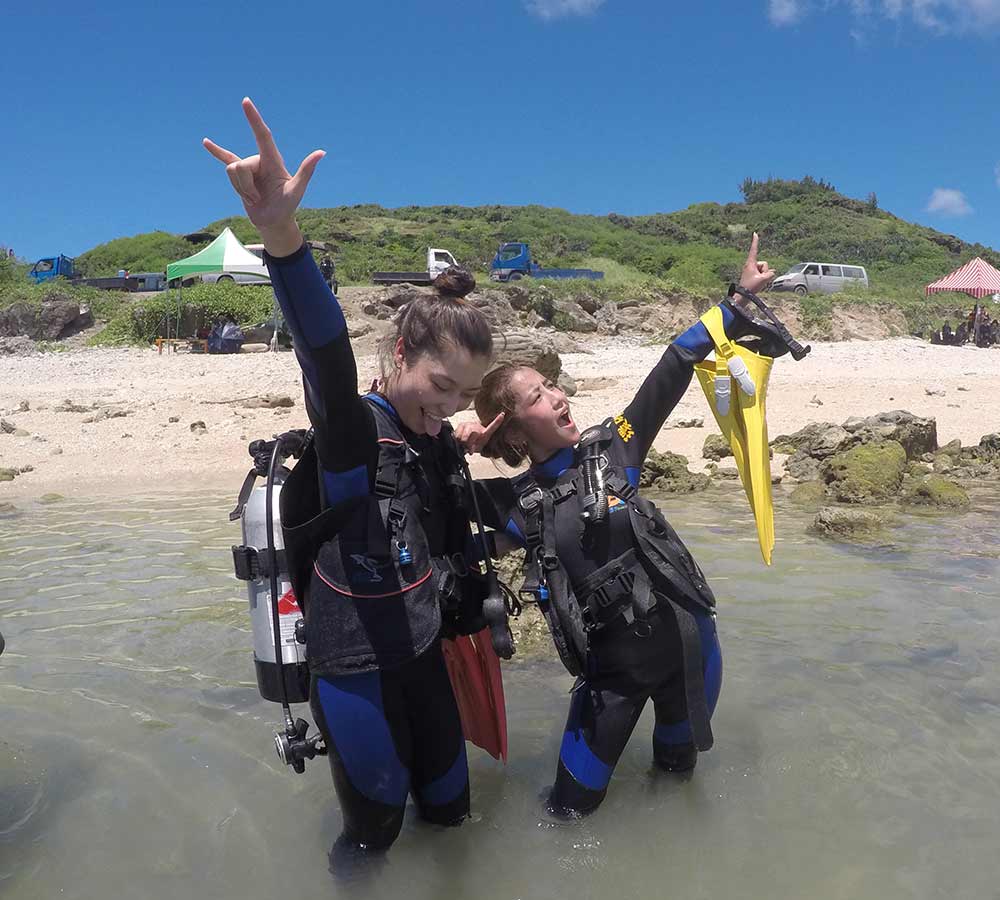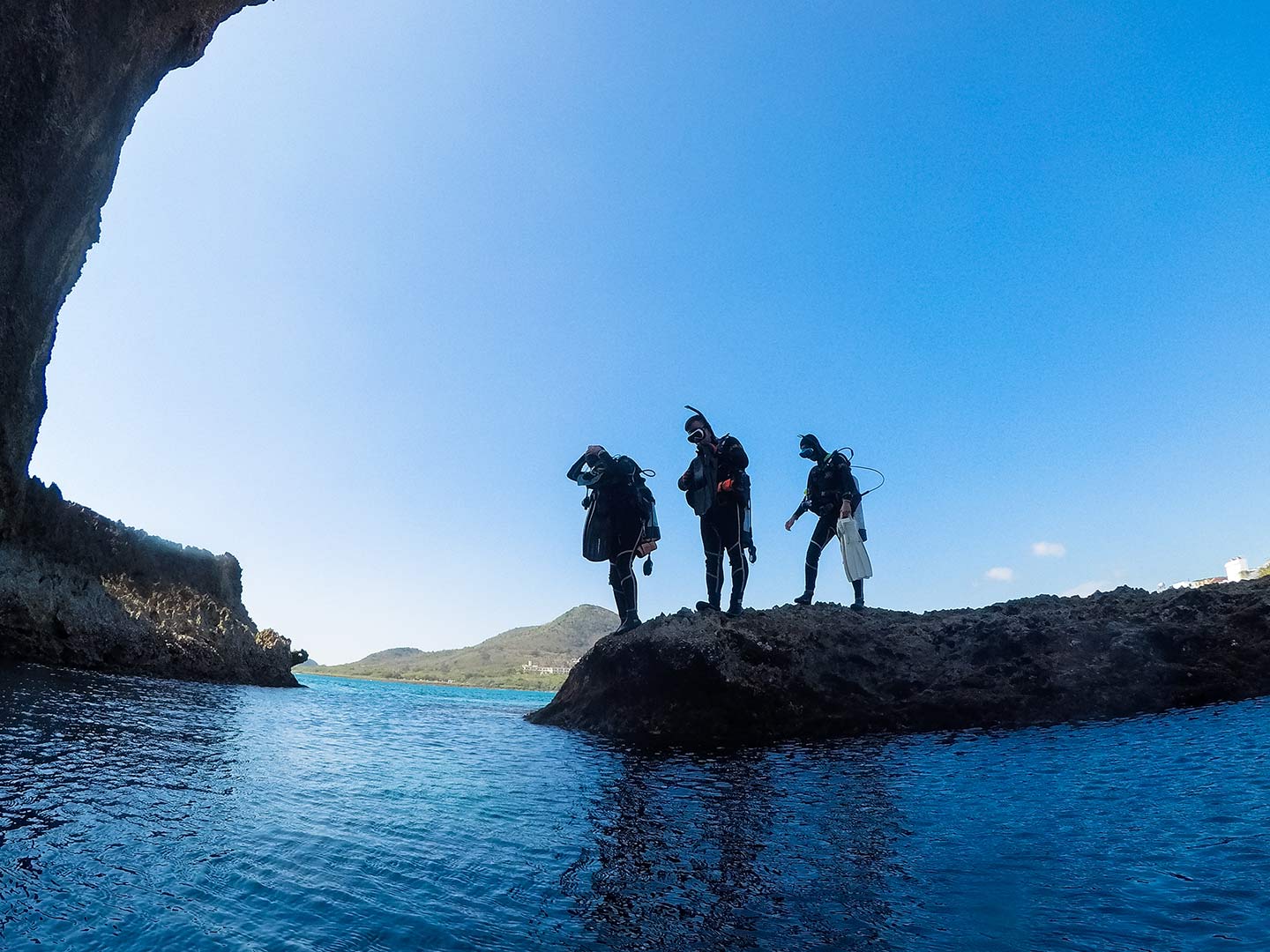10 Best Ways to Make Shore Diving Easier and More Comfortable

Kenting, the name of the place that most people often mention, is actually called [Hengchun Peninsula]. Hengchun Peninsula is surrounded by the sea on three sides, which is a place where diving activities can be conducted all year round. Here, shore diving or boat diving is a popular way for divers to dive. Most of the active divers do not always choose boat diving as the only way of diving, when the sea condition or wind condition is not suitable for boat diving activity, active divers actually have shore diving way to dive and the diving experience and CP value are also very different. Even so, for those who like to dive frequently, shore diving may be the most economical choice.
Perhaps when performing shore diving, you may consider the wave conditions at the entry and exit points, the environment of the diving site, and the diving equipment may contain a lot of sand and mud. Whatever the situation, make shore diving as easy as possible and know exactly how to prepare for a shore dive and how to perform a shore dive. You can follow these simple and effective methods to make shore diving easier, and a whole new world of diving will open up to you. By doing shore diving frequently, you will quickly increase your diving experience and time!
Follow these tips to make shore diving easier and more efficient
1.Before you go on a shore dive, make a good dive plan
With some dive site books and SSI MyDiveGuide information, you can get there Be familiar with and understand the geographical conditions, topography or ecology of the dive site before. At the same time, you can make a detailed diving plan before diving and make your diving more enjoyable. You can use SSI'sMyDiveGuideFind detailed information about local dive sites, such as parking locations, surface swim times and site ecology, site depth, various dive parameters, and most importantly, planning your dive trip budget.
2.Scouting dive sites
Before diving, it is a good idea to explore the dive site before your dive gear has been transported to the site. Go to the dive site, observe the waves and decide the best entry point based on the tide and dive site information. Choose a location to assemble your gear near the water entry point, or if you need to assemble your gear in your vehicle.
3.Choose a quality local dive center or dive resort
Discuss with fellow divers or diving partners, choose a high-quality diving center or diving resort, and hire a local diving guide to lead you on the dive. You will have a pleasant and safe dive. At the same time, accommodation during a diving holiday is also a consideration when arranging diving. Adequate rest can make divers dive more happily. Certified active divers will be led by local dive guides to dive and obtain detailed information and ecology of the dive sites, which is of great help whether you are doing diving photography or diving official. We offership and shore diving for certified holders Active divers make their selections.
4.Understand the wave conditions at dive sites and learn how to get in and out of the water quickly and safely
In many shore diving sites, divers may encounter waves due to weather conditions and wind and wave size. These factors may cause divers to have to cross square areas when entering and exiting the water. No matter how big or small they are, shore diving becomes easy if you know how to properly ride through the waves. Important tips for getting through the waves quickly:
- Observe the periodic frequency of wave fluctuations and grasp the timing of entering the water.
- During the cycle, walk sideways into the water facing the waves, then quickly put on your fins in waist-deep water and swim out to sea. Of course, the wave conditions at some dive sites require you to put on fins far away from the breaking area.
- Keep the mask and second stage firmly on your face.
- When a wave happens to come, face the wave sideways (never face the wave head-on), stand with your feet apart and press the second stage, wait for the wave to pass, and stay away from the wave area as soon as possible.
- Once you are in chest-deep water and almost over the break, inflate your BCD and kick as fast as you can to get out of the break.
- The way out of the water is just opposite to the way into the water. Under normal calm wave conditions, swim until the water is waist deep, take off your fins and go ashore. Or you need to take off your fins before entering the wave area, and face the waves sideways. Get out of the water in the right way and always observe the waves and the path you want to walk. If you fall, you can follow the waves back outside and get out of the water again.
Take control of your dive, no matter the conditions, with SSI's Ocean Tide and Current Specialty Course.
5.You need to prepare a backup dive plan
Plans always change and sometimes you'll be on a diving day but the waves are too big to contend with. You can choose to use your backup plan to change dive sites instead of canceling your dive, but always remember to have a backup plan to change dive sites just in case. Having an alternative dive site plan gives you more options and keeps you safe by not trying to dive in conditions that are beyond your comfort level. Of course, subject to safety conditions, you can ultimately choose to end today’s dive.

6.Have your diving lights, signaling devices, and sound devices ready.
When divers use shore diving for diving activities, whether it is boat diving or shore diving, diving lights, signaling devices and sound devices are the best tools for divers to seek help when an emergency occurs and they are unable to return to the original water entry point.
7.Carry a floor mat to provide protection for your dive gear when assembling your equipment.
Dive equipment is assembled on the ground, the transmission system or buoyancy system or dive instrument information system may get sand or mud on it and cause the risk of malfunction. You can easily eliminate this problem by carrying a so-called "floor mat". Place a floor mat on the ground near the trunk of your car to protect your diving gear from mud and sand.
8.The importance of anti-slip diving overshoes for shore diving
Non-slip diving galoshes are probably a must-have for most divers doing shore dives, but those used to diving off boats in the tropics may not be used to wearing galoshes where heel-style fins are used. SelectBoots with good traction,to minimize slipping on rocky entrances. Wearing galoshes not only keeps you warm, but also protects your feet as you walk from your car through hot sand or rough terrain to your dive site entry point.
9.Return to the water point and end the dive
The best way to return to the water after a shore dive is to swim directly back to the water, so plan your air consumption during the dive so that you can swim directly back to the water. Returning along the shoreline at the end of the dive also ensures your safety stop without having to wait in the water while suspended to the stop depth.
10.Rinse immediately after diving
Most beaches and resort recreation areas offer public showers. This can be accomplished by rinsing your dive gear before removing it and returning it to your vehicle. If you are diving where there are no showers, consider purchasing a portable rinse shower to carry in your car or carrying a couple of fresh water gallon jugs for rinsing.
By following these ten tips, shore diving can become a fun, easy and safe activity that allows you to dive more often. If you're new to shore diving, seek out a buddy who has already been to the site. They can help you master these diving techniques and share with you the best dive sites in the area.
Now, what are you waiting for? Get out there and start diving!
